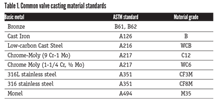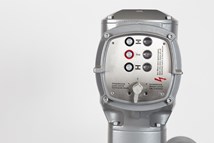International Trade: A New World
The world of trade has seen some unprecedented changes in the last few years, changes made more complicated by COVID-19 and what it has done to supply chains, Paula Connelly, a member of the Sandler, Travis & Rosenberg P.A. law firm told attendees at VMA’s Virtual Outlook Workshop in August.
#VMAnews
Regarding China/U.S. relations, the phase-one deal signed at the beginning of 2020 offered a glimmer of hope that things between the two countries might ease tariffs. But the relationship has only gone downhill.
“Companies are now realizing that these tariffs may be here for the long-term,” Connelly said.
She warned that an important issue for many companies is ensuring their products are not considered “of Chinese origin” because of what goes into them.
Many companies have suppliers of components in China and what they would like to be able to do is ship the components out to a third-party country such as Vietnam, Thailand or the Philippines. However, Connelly noted, “what they have to ensure is that whatever is done in that third-party country is considered more than just assembly” because U.S. Customs is scrutinizing products. The regulator is taking the position that if most of the components come from China, even when they are assembled elsewhere, they can be considered Chinese.
One issue many companies are dealing with currently is that as of July 1, the North American Free Trade Agreement (NAFTA) was replaced by the U.S. Mexico-Canada Free Trade agreement. Although there is a grace period, companies have to prepare for the fact that Certificates of Origin under NAFTA are no longer valid going forward.
In summary, companies will need to deal with issues surrounding Certificates of Origin under the new trade agreement. In addition, the government will continue enforcement of issues on both the import and export side, including ensuring companies do not conduct business in areas with forced labor practices.
RELATED CONTENT
-
Solenoid Valves: Direct Acting vs. Pilot-Operated
While presenting in a recent VMA Valve Basics 101 Course in Houston, I found myself in a familiar role: explaining solenoid valves (SOVs) to attendees. (I work with solenoids so much that one VMA member at that conference joked that I needed to be wearing an I Heart Solenoids t-shirt). During the hands-on “petting zoo” portion of the program, which involves smaller groups of attendees, one of the most frequently asked questions I get from people came up: What’s the difference between direct-acting and pilot-operated SOVs, and how do we make a choice?
-
An Interview With ... Matt Thiel
Matt Thiel, president of AUMA Actuators, was named chairman at VMA’s 2022 annual meeting.
-
Using Additive Manufacturing for Valve Repairs Across the Globe
Printing components on-site will allow for faster repairs and parts replacement for critical applications.










 Unloading large gate valve.jpg;maxWidth=214)